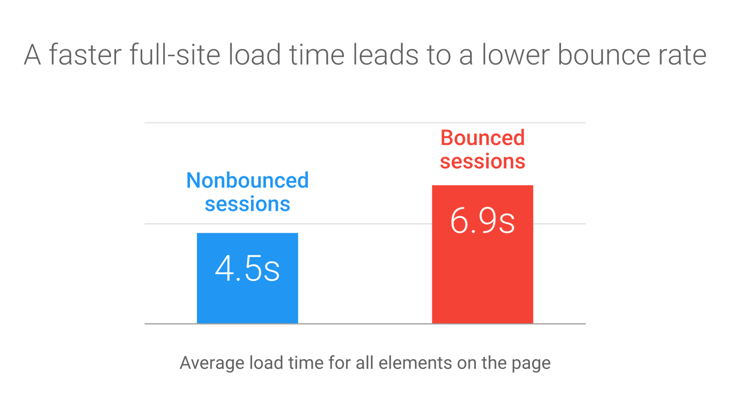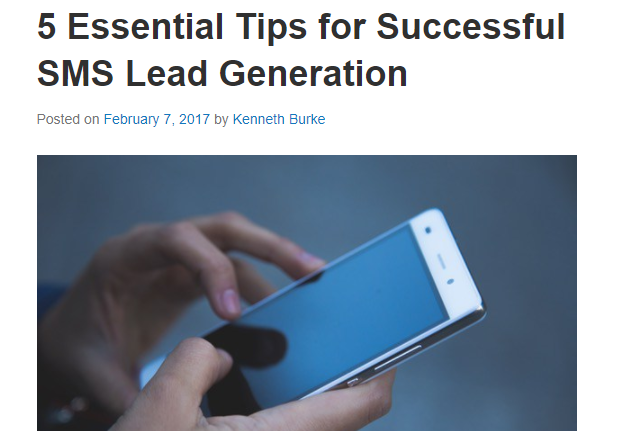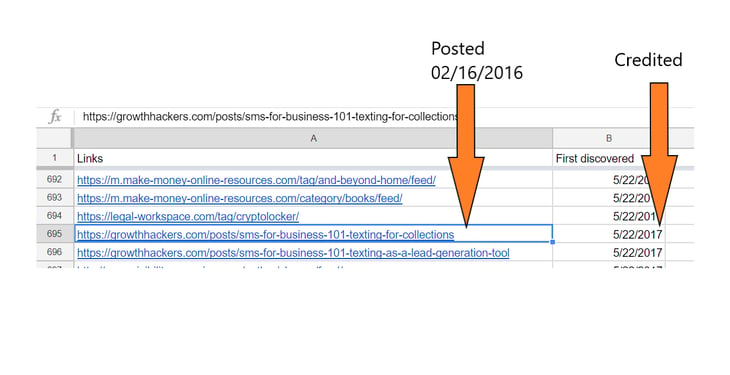
As a B2B texting software, one of our main goals at Text Request is maximizing value, both for ourselves and our users. That's what led us to focusing on organic traffic.
Billions of people are looking for answers or solutions to their questions or problems, and we're trying to add value. So we saw organic search as a symbiotic relationship we could tap into.
As the guy responsible for our content and SEO, I've only found one "secret" to growing organic traffic. I'll share this secret in a bit, but first I'll walk you through the steps we took to grow our organic traffic 120% in 5 months, and what we learned through it all.
Start With Small Changes
We started making changes at the end of December 2016, and the first step was making technical updates to our website.
- We properly configured our XML sitemap, and uploaded it to our Google Search Console so Google could crawl our site more easily.
- We updated our International Targeting inside Search Console to focus on the U.S. (which is where our target audience lives).
- And we increased our site speed, because we'd seen how much speed affects traffic and engagement over previous months.

Image Credit: Think With Google
Then we adopted a new content strategy from Rand Fishkin (founder of Moz). The strategy is: find the best piece of content on your target keywords or topics, and create something 10X better.
So that's what we did!
Starting in 2017, we looked at what content was available on our target search terms, and then created content we thought was 10X better. It worked! But the question we had to answer first was: What does 10X content look like for our market?
Create 10X Content
The most powerful pieces of content bring in traffic, leads, and backlinks. They're normally what add the most value to everyone, and that became the essence of our content -- add value to everyone.
We said, "Okay, everything needs to be 10X content, and that means it has to be valuable for three audiences."
Me / Text Request
If this doesn't add value to me, how can I expect it to add value to anyone else? It became important to make sure we could do two things with all new content:
- Use it to inform and direct company discussions.
- Link back to it in other relevant content on our site.
Our Targets
To bring in our targets, we had to provide something valuable, something that answered their questions and provided solutions to their problems.
An important piece in this: we had to know our targets' wants and needs. Thankfully, our team has spent countless hours talking with and learning about our customers. Otherwise, this would have been much more difficult!
Our Competitors
Brands are always looking for information that validates and promotes their position. We thought if we created this content, our competitors would use it, and come to see us as leaders in the space.
This was a bit of a long shot, but it's working! Nearly all of our competitors, and brands in similar niches, link to our content, which strengthens it and helps more of our targets find us.
If it sounds like this content takes a lot of time to create, it does. That's why we only publish every other Tuesday. But we do publish high-quality content regularly, and it's paying off!

The 80/20 Rule Still Applies
Even following these criteria, it's been difficult to know exactly what will resonate with our audience before we publish it.
It doesn't seem to matter how much keyword research and competitive mapping we do. The 80/20 rule still applies. If you're not familiar, this means about 80% of our traffic comes from about 20% of our content.
I don't think this means we should change our strategy, but that we have to keep producing to find what's most helpful.
Revamping Existing Content
We'd made some technical updates to our site and started publishing 10X content, but we still had a bunch of older blog posts that needed help.
They weren't 10X content, and my understanding of SEO had evolved a lot in the time since we started posting. So we saw revamping existing content as an important part of our SEO strategy.
I started asking myself questions as I reviewed each post, like:
- Can I tell this story clearly with fewer words?
- If I wrote this today, would I still feel comfortable publishing it?
- What graphics would support this?
- Is there any new research available on this topic?
- What articles are related to this one? What can I link to?
Responding to questions like these kept me from just spot editing, and made sure each piece began adding real value to everyone.
Over the five month period, I was able to revamp 55-60 of our posts, and I'm confident that made a huge impact on our organic search traffic.
Getting Backlinks
Backlinks are one of the biggest ranking factors for organic traffic, so they had to be part of our plan. From December to May, we grew our total number of backlinks by about 60%, which, in addition to driving referral traffic, boosted our standing with search engines.
Our backlinks mostly came from 3 places:
- HARO: About one in six pitches were published with a link to Text Request.
- Guest Posts: We wrote for other publishers, and occasionally had a freelancer contribute on our behalf.
- Earned Links: We used a lot of research in our content that other brands found valuable enough to link to. This was the biggest source of our backlinks, which I took to mean we were doing the right things.
Our Results

In December 2016, we had a total of 10,663 organic sessions. In May 2017, we had 23,483 organic sessions, meaning that our simple four-point strategy more than doubled our traffic in only 5 months!
I think it's important to note, too, that our bounce rate and time-on-page both improved during this process. Clearly, if you create 10X content, everyone wins.
In poor practice, we didn't set any goals or milestones before implementing our strategy. That's something we could have done better. Although, we really didn't know what would be realistic.
It's safe to say, though, that these results exceeded my expectations, and I'll be thrilled to keep them up moving forward!
What We Learned
It Takes Patience
Anyone in SEO will tell you results take time. As an agency friend of mine said, "The results of SEO work done today might not become apparent, and might not be discovered by search engines, for weeks or even months."
I have to agree. In Search Console, I'll regularly see where we finally "got credit" for a backlink months after it was published. I believe our record is a press release that took two years, four months to register.

It's possible -- even likely -- that a significant portion of our results came from things we did well before this case study. During the case study, our results still came in stages.
January's organic traffic was 45% higher than December's, but February had flat growth. March was up again, April was flat, and in May we peaked at 120.2% growth.
Then there were publishing cycles to deal with. Ours is three weeks, but guest posts could take anywhere from five days to two months! I felt like I was always waiting for something.
Sometimes you have to keep your head down and stick to your plan, even if you aren't seeing immediate progress. It can take a lot of patience to grow organic traffic, but that patience pays off!
Our 1 "Secret" to "Hacking" Google
People, myself included, often get too caught up in the minutia of SEO to see the bigger picture.
SEO is commonly thought of as a set of technical laws. When you follow them, Google rewards you. When you disobey, you will be punished.
But every algorithm update focuses on one key concept: adding value to Google's users.
Search engines care most about the people using their site to search. So when you add value to their users, you're rewarded with traffic.
The thing is, value comes in many forms. Website speed adds value, especially since 40% of viewers leave a site if it doesn't load within 3 seconds.
Page engagement adds value, particularly since most viewers spend less than 15 seconds viewing a webpage. If you give people a reason to stick around for longer, to keep scrolling, and to click through, Google will send more people your way.
When done right, 10X content is powered by this "secret." If things are fast, engaging, helpful, and enjoyable, everyone wins. This is how we were able to quickly grow our organic traffic, and it's how you'll be able to grow yours, too!
from HubSpot Marketing Blog https://blog.hubspot.com/marketing/how-we-grew-our-organic-traffic-120-in-5-months


No comments:
Post a Comment